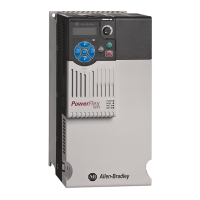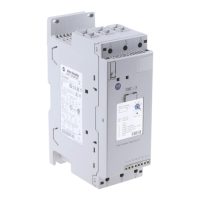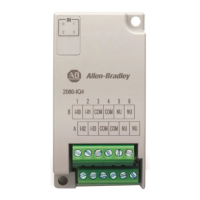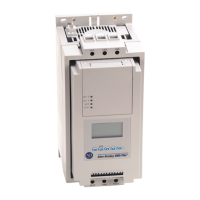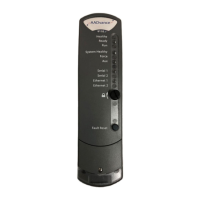Rockwell Automation Publication PFLEX-RM003E-EN-E - January 2011 27
Detailed Drive Operation Chapter 1
Cable Trays and Conduit
Refer to the Wiring and Grounding Guidelines for Pulse Width Modulated
(PWM) AC Drives Installation Instructions, publication DRIVES-IN001
, for
detailed information.
Carrier (PWM) Frequency
See the PowerFlex 700S AC Drives, Phase II Control Technical Data, publication
20D-TD002
, for derating guidelines as they travel to carrier frequency.
Parameter 402 [PWM Frequency] sets the carrier frequency. In general, the
lowest possible switching frequency that is acceptable for any particular
application is the one that should be used. There are several benefits to increasing
the switching frequency. Refer to Figure 1
and Figure 2 below. Note the output
current at 2 kHz and 4 kHz. The “smoothing” of the current waveform continues
all the way to 10 kHz.
Figure 1 - Current at 2 kHz PWM Frequency
Figure 2 - Current at 4 kHz PWM Frequency
The benefits of increased carrier frequency include less motor heating and lower
audible noise. An increase in motor heating is considered negligible and motor
failure at lower switching frequencies is very remote. The higher switching
frequency creates less vibration in the motor windings and laminations making
lower audible noise. This may be desirable in some applications. Some

